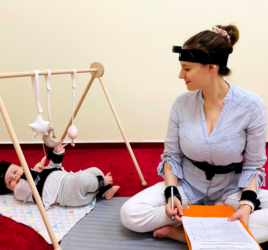
Vicarious learning of a researcher
Everyone has their personal idols. Let it be your favorite sports team winning a game, or even the championship (despite suffering many setbacks), or James Bond miraculously overcoming every obstacle and saving the day – we are all fascinated by such idols and their actions. People look up to their idols, to the ones they view as excellent, and try to learn valuable lessons from them. While many of us may be fascinated by 007 who is chasing “Goldfinger” across the globe, a peculiar population -researchers- can find its idols in other researchers and the studies they perform. And sometimes, these idols come from scientific domains very different from our own.
Just as our idols, everyone of us has to deal with various setbacks on their way. For a high school student this may be receiving a bad test result, for an Olympian it may be losing an important match, or for James Bond: finding himself in a deathly trap. In the case of athletes, overcoming tremendous setbacks in their early years has been suggested to be a necessity in order to reach excellence [1]. In my research on resilience, which is the ability to bounce back from adverse experiences like the ones just described [2], I, too, had to find my idols from whom I could learn.
Where to look for idols?
Since my PhD project is a merger of Developmental Psychology, Organizational Psychology, and Psychometrics, the integration of the diverse topics, aims, and methods found in the respective domains proved to be challenging. First, I had my topic on resilience, which is usually a topic of Organizational or Performance Psychology. Secondly, I had an approach towards studying it from the Developmental Psychology [3][4]. And thirdly, there was this broad idea on how to measure and ultimately predict resilience from the domain of Psychometrics [5]. So, I had many puzzle pieces, but no template for how to combine them. In order to find some inspiration on how fusing various approaches could work, I had to search for idols beyond the boundaries of my scientific domain.
Due to the scarcity of satisfying literature within Psychology, a source of inspiration from elsewhere is needed. Sometimes very fundamental similarities between two completely different subjects can bridge ideas together. A nice illustration of this practice is provided by Mandy van der Gaag [6]. As a researcher in Developmental Psychology, she collaborated with Theoretical Biology in her quest to build a model for career choice. In case of resilience, I was inspired by research from Population Sciences [7], climate change [8], clinical research [9] and I am currently working on combining each individual piece of the puzzle to assemble the big picture of resilience in performance. And… now I have a template!
A good place to start
For some lines of research it may be harder than for others to use ideas from other scientific domains. Nevertheless, a good starting point is collaborating with other departments from the faculty. As outlined by my example, I do not rely entirely from input outside of Psychology. Drawing on expertise from other departments (in my case Psychometrics [5]) and discussing different perspectives provides more in depth knowledge into the topic at hand. Forming teams of researchers who pursue a similar goal, but take different approaches are therefore not only beneficial for each individual member, but also for the line of research itself. From my personal experience, performing research from the intersection between Developmental Psychology, Organizational Psychology, and Psychometrics, and beyond, is a profound example of combining expertise and insights beyond the usual.
Therefore, I would like to encourage researchers to look for the 007s of science and expand their horizon of inspiration, in order to advance the field of Psychology, or any other domain of science.
Relevant links and publications
[1] Rees, T., Hardy, L., Abernathy, B., Gullrich, A., Côté, J., Woodman, T., … & Warr, C. (2013). The UK Sport white paper: a systematic review of research into the identification and development of the world’s best talent. A report sponsored by UK Sport, England.
Master Program ‘Talent Development and Creativity’
NOTE: Image by AdventureJay



